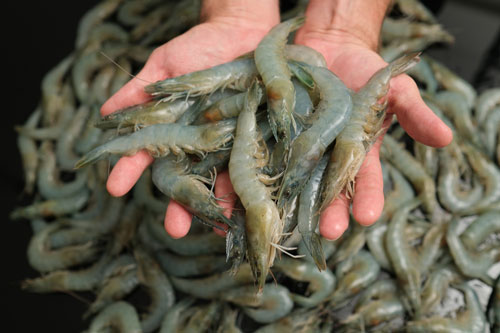Growing shrimp, also known as shrimp farming or aquaculture, is a complex process that involves creating a controlled environment for the shrimp to thrive. Here are the general steps to grow shrimp:
- Select a Suitable Location: Choose a location for your shrimp farm that has access to clean water and is free from pollution. The water source should be reliable and appropriate for shrimp farming. Coastal areas or areas with brackish water are often preferred.
- Prepare the Pond or Tank: Shrimp can be grown in ponds or tanks. Prepare the pond or tank by ensuring proper size and depth. Ponds should have good water retention capacity and be equipped with water management systems to control water quality and levels.
- Water Quality Management: Maintaining proper water quality is essential for shrimp growth. Monitor and manage parameters such as temperature, salinity, pH, dissolved oxygen, and ammonia levels. Water should be aerated to ensure sufficient oxygen supply.
- Stocking Shrimp: Choose a suitable shrimp species for your farm. Commonly farmed species include Pacific white shrimp (Litopenaeus vannamei) and black tiger shrimp (Penaeus monodon). Stock the shrimp at a recommended density, taking into account the size of the pond or tank.
- Feeding Shrimp: Shrimp require a balanced diet to grow. Commercial shrimp feeds are available in various forms (pellets, powder, etc.). Feeding schedules and amounts depend on the size and species of shrimp.
- Monitoring Health: Regularly check for signs of diseases or stress in the shrimp. Maintain good hygiene in the pond or tank to prevent disease outbreaks. Consider consulting with a veterinarian or aquaculture expert if you encounter health issues.
- Water Exchange and Filtration: Ensure proper filtration and periodic water exchanges to remove waste and maintain water quality. The frequency and volume of water exchange will depend on your specific farm conditions.
- Harvesting: Shrimp are typically ready for harvest when they reach a desired size. Harvesting methods can vary but usually involve draining the pond or using nets to catch the shrimp.
- Processing and Marketing: After harvesting, process the shrimp to prepare them for sale. This may involve removing shells, deveining, and packaging. Establish marketing channels to sell your shrimp to local markets, restaurants, or distributors.
- Record Keeping and Management: Keep detailed records of your farm operations, including feeding schedules, water quality parameters, and health observations. This information can help you make informed decisions and optimize your farming practices.
- Environmental Considerations: Be mindful of the environmental impact of your shrimp farm. Implement sustainable practices to minimize pollution and habitat disruption. Consider using best management practices (BMPs) and environmentally friendly technologies.
- Compliance with Regulations: Familiarize yourself with local and national regulations related to shrimp farming, including permits and environmental standards. Ensure compliance to avoid legal issues.
Shrimp farming can be a profitable venture when managed correctly, but it requires careful attention to detail, continuous monitoring, and adaptation to changing conditions. Seeking guidance from experienced aquaculturists or experts in shrimp farming can be valuable, especially if you are new to the industry.

